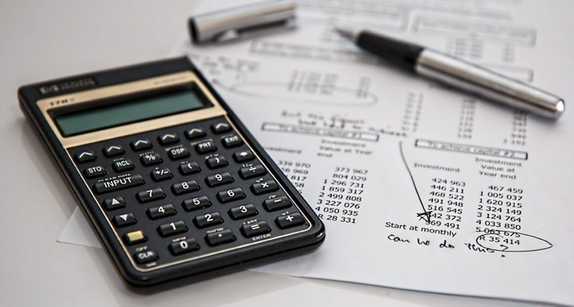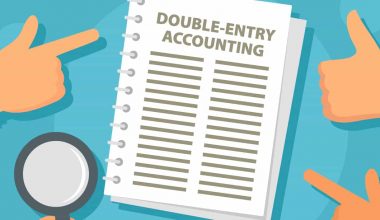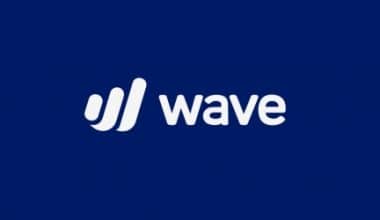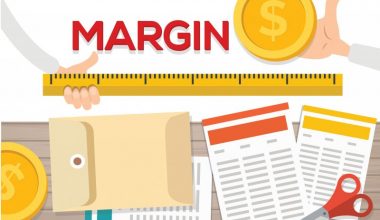Over time, sidelining bank reconciliation has put a lot of financial institutions into dangerous situations as well as bad financial states. This is why you need to take extra care in handling your business’s bank statements. This post, however, makes things easier for you as we will go over a couple of examples and templates when it comes to bank reconciliation.
But what exactly is bank reconciliation? Let’s find out…
Bank Reconciliation
The process of reconciling a bank account balance in an entity’s books of account to the balance that the financial institution provides in the most recent bank statement is called bank reconciliation. A bank reconciliation statement compares an entity’s bank account to its financial records. The statement details the deposits, withdrawals, and other transactions that have occurred in a bank account over a certain time period. A bank reconciliation statement is an effective financial internal control tool for detecting and preventing fraud.
The reconciliation statement aids in the identification of discrepancies between the bank and book balances so that the business can make appropriate adjustments or repairs. The accountant of a company often carries out the month-end reconciliation statement. Therefore, you must investigate and necessarily correct any discrepancies between the two figures in the statement.
Understanding Bank Reconciliation
Account-holders utilize bank statements to complete bank reconciliations because many banking institutions now allow direct downloads of financial transaction information into account-holders’ accounting software. which is often in the CSV file format in order to aid with reconciliation. Meanwhile, the differences between an entity’s books of account and the bank’s records can occur for a variety of reasons, the most common are below on our list.
- The difference in recording entries is owing to time.
- Although the business records the bank transactions, it is not the duty of the account holder to do the recording.
- Errors in entry recording
Look at the transactions on a bank statement since the last reconciliation and the entity’s accounting records (cash book) in order to determine if any of them tally. This might require you to go over every transaction in both sets of data since the last reconciliation and figure out which ones you mismatched.
Note also, that you should document any inconsistency to help with future reconciliation. You can also make the appropriate changes in the cash book as well as notify the bank if necessary. As a result, it's a good idea to do reconciliations at regular intervals to reduce the amount of effort you put into it.
Requirements for Bank Reconciliation
A bank reconciliation statement needs the use of both the current and prior month’s statements, as well as the account’s closing balance. This is because transactions may still be occurring on the actual statement date, the accountant normally creates the bank reconciliation statement by utilizing all transactions from the previous day.
Bank Reconciliation With Examples
Bank reconciliation is the process of determining the causes of the discrepancies between a business’s bank statement and its cash book. You can use this method not only to identify variances but also to make modifications to pertinent accounting records in order to maintain the data up to date. Some simple bank reconciliation examples are below ;
Example 1
Richard has a balance in a passbook of $10,000 as of December 31st, 2020. These are the other details:
- Three checks of $2,000, $1,500, and $2,500 were deposited in the bank on December 30th, 2019, but were recorded on the bank statement in January 2020.
- A check for $500 issued on December 31st, 2019 was not presented for payment.
- A dividend of $1,000 on stocks was credited to the bank account but not recorded in the cash book.
- A direct deposit of $400 was made into the bank account by a customer, which was not recorded in the cash book.
- Bank charges of $100 were entered only in the bank passbook.
- Balance as per cash book on 31st December 2019 was $14,200.
Solution
The solution to the difference between the business account and the statement is in the bank reconciliation statement of Richard. as of 31st December 2019
Example 3
Bella Limited, has a difference regarding the balance between the cash book and the bank statement as of March 31st, 2021. If the business advises you to prepare a bank reconciliation statement for the date above with the following information, what would it look like?
- The balance, as per the bank statement as of March 31st, 2021, is $4,000. The balance, as per the cash book, is $1,400.
- Checks for $1,000 and $500 were issued as of March 30th, 2021, but have not yet cleared.
- The insurance premium paid by the bank is $200, which is not yet recorded in the cash book.
- An outgoing check of $2,000 was recorded twice in the cash book. It is properly recorded in the bank statement.
- Payment of a check for $400 was recorded twice in the passbook.
- Dividends received of $500 are recorded only in the bank statements and not in the Cash Book.
- A check for $700 was deposited on March 29th, 2021, but it has not yet been collected.
- Bank charges of $100 are debited only in the Bank passbook.
Solution
The bank reconciliation statement solution of Bella Limited will be contained in their accounting statement as of March 31st, 2021
Read Also: HOW LONG TO KEEP BANK STATEMENTS
Bank Reconciliation Templates
A bank reconciliation statement template demonstrates how to go about determining the adjusted cash balance using the bank statement and the accounting record of a firm.
A bank reconciliation statement is a document that compares a company’s cash balance on its balance sheet to the amount on its bank statement. The two accounts typically need to be reconciled in order to see if they will need any accounting modifications. You also need to perform regular bank reconciliations to guarantee that the company’s cash records are accurate. They also aid in the detection of fraud and money laundering.
Bank Reconciliation Procedure
These are procedures you can follow to consistently check your business statements as well as reconcile them when necessary. For your bank statement reconciliation, follow the simple steps you will find below. To also find uncleared checks and deposits in transit, compare the company’s list of issued checks and deposits with the checks listed on the statement. The steps include;
- Add back any deposits made in transit using the cash balance stated on the bank statement.
- In order to subtract any outstanding checks from the bank’s cash sum.
- Add any interest collected and the number of notes receivable to the company’s closing cash balance.
You also need to deduct any bank service fees, fines, or NSF checks. Meanwhile, the adjusted corporate cash balance will be the result of the steps above. The adjusted bank balance and the company’s final adjusted cash balance should match after reconciliation.
Benefits or Advantages of Bank Reconciliation Templates
Templates are generally beneficial in recent times because they don’t only save you stress, they typically save you time. However, there are a lot of bank reconciliation templates out there currently, as much as we want to save time. You need to be careful and make the best decision that suits your business. Some of the advantages and purposes of templates include;
- To receive updates on your bank account balance.
- In order to enable you to detect issues that you may not be aware of.
- For the location of any checks that have not yet been cashed.
- To be able to conduct internal auditing effectively.
- To be able to examine your financial situation.
There are many free and easy templates for bank reconciliation available online. Most of these designs of templates are for the purpose of your business as well as to help ease the stress of manually doing the work or starting from scratch. Meanwhile, you will find a variety of templates on here template lab. From there, you can make a decision that best suits your business.
What is the main purpose of bank reconciliation?
In order to prevent and detect fraud, bank reconciliations are a crucial internal control tool. By explaining the discrepancies between the cash balances in the accounting record and the bank balance position according to the bank statement, they also assist in identifying accounting and banking problems.
Who prepares the bank reconciliation statement?
It is the process of correlating the data on a bank statement with the balances for a cash account in an entity’s accounting records. The business enterprises prepare the bank reconciliation statement.
What is ledger balance?
The opening balance in a checking account is known as a ledger balance. At the conclusion of each business day, ledger balances are determined after taking into account all credits, withdrawals, and interest from that day’s transactions. An accessible balance is distinct from a ledger balance.
What are the basics of reconciliation?
Comparing transactions and activity to supporting documentation is the process of reconciliation. Reconciling also entails settling any differences that might have been found.
Is ledger a debit or credit?
Assets are equal to liabilities plus shareholders’ equity on a balance sheet or ledger. A credit to the account results from a fall in asset value and a debit from a rise in asset value.
Conclusion
Something as little as differences in your business bank statement and account can cause a huge confusion or even loss of money to your business. This is one of the reasons you need to properly understand bank reconciliation as a topic, as well as the examples to learn from and easy templates to use for your business.
FAQs
What is bank reconciliation?
Bank reconciliation is an important process in accounting in which organizations match their bank statements with the transactions that are recorded in their general ledger. Preparing a bank reconciliation statement helps businesses to eliminate possible errors in transactions or bookkeeping
What are the 4 steps in the bank reconciliation?
Once you’ve received it, follow these steps to reconcile a bank statement:
- Compare the deposits. Match the deposits in the business records with those in the bank statement.
- Adjust the bank statements. Adjust the balance on the bank statements to the corrected balance.
- Adjust the cash account.
- Compare the balances
How do you do a bank reconciliation?
Here are steps when it comes to bank reconciliation:
- Get bank records.
- Get business records.
- Find your starting point.
- Run through bank deposits
- Check the income on your books
- Run through bank withdrawals
- Check the expenses on your books
- End balance
Related Articles
- RECONCILIATION ACCOUNTING: Meaning, Examples, and Process (+Detailed Guide)
- OUTSTANDING CHECKS: How To Calculate Outstanding Checks With Examples
- Chain Of Title: A Comprehensive Guide, Updated!!!
- FINANCIAL STATEMENT OF A COMPANY: Best 2023 Samples & Templates to Learn From
- How To Order Checks Online: 15 Best Places to Personal Checks in 2023






